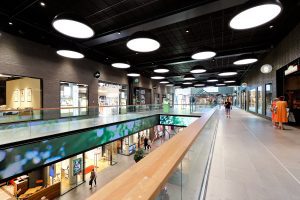Companies that share data, applications, and operations with their industry ecosystem will see their revenues increase by three percentage points in 2022 compared to those that don’t, according to IDC predictions.
That sounds like a good reason to make the most out of your industrial data. But is data sharing a reality in most industrial companies today?
To deep dive into this and understand the benefits of data interoperability, I met with Kaishi Zhang, who leads Schneider Electric’s expert team rethinking the future of industry with next-generation software-centric industrial automation systems.
Barbara: Our industrial customers have seen data availability and collection evolve considerably over the last few decades. How would you account for this change, Kaishi?
Kaishi: Well, looking back ten or 20 years ago, most customers would complain they couldn’t collect enough data. Connectivity was limited because there were only a few smart devices used on the shop floor. Fast forward to the past three years, and we’ve seen how the COVID pandemic has accelerated digital transformation. And manufacturing companies, like us, are seizing more digital opportunities as a result.
Now, with so much data in your system, the issue is, “How do I capture the business insights and create value from all this data?”
Eliminating the closed system bottleneck
Barbara: I agree; we’ve passed an important inflection point. The industrial landscape has changed from one lacking data to one questioning how to translate data into business value. This is why data interoperability is a game-changer for industrial and manufacturing businesses. Can you explain more?
Kaishi: Clearly, the need for data interoperability has escalated with the increased digitalization of industrial ecosystems. For today’s industrial and manufacturing applications to function, machines need to work with other machines. Systems need to communicate with other systems. This gets more complicated when different parts of a system come from different manufacturers, vendors, or suppliers and when different generations of products coexist together in a plant.
Barbara: When we talk to customers, this is always one of their biggest pain points. Different standards or protocols mean that subsystems are siloed, making engineering less efficient and operations more prone to errors.
Kaishi: Yes, the main bottleneck is the closed and proprietary automation architecture that the industrial world still predominately uses. Meaning that most industrial applications are hardware dependent.
Barbara: That then ties industrial software applications to specific hardware throughout their lifecycle. And no interoperability between these applications causes the data-sharing issue.
Kaishi: Exactly, and this is made even worse as plants grow in size, add more smart devices, and the number of data points blooms.
Turning data into actionable intelligence
Barbara: The real challenge here is how to aggregate, consolidate, and ensure the quality of the data that is fed into the software. Ensuring interoperability allows the software to access data from wherever you are in the industrial lifecycle, across domains, and even from external sources. The rich data pool can then be analyzed to generate precise predictions for engineering, operation, maintenance, and for tracking and tracing supply networks.
Kaishi: Yes, that is when industrial analytics applications help our customers to better leverage more complete, more accurate data into insightful information to make better business decisions.
Plug-and-produce automation
Barbara: Then what are the biggest roadblocks stopping data interoperability in industrial environments?
Kaishi: From the point of view of technology, most of today’s industrial automation standards, like EtherNet/IP or Modbus TCP for example, only match one specific function or one specific layer in an industrial control system architecture.
Barbara: In fact, industrial automation systems are built on applications, or use cases. Closed and proprietary architectures make interoperability at the application layer extremely difficult.
Kaishi: We need to decouple the software application lifecycle from the hardware.
Barbara: This is why we’re calling for an approach where we build an ecosystem of portable and interoperable software components that are independent of the underlying hardware infrastructure.
Kaishi: Yes, that’s how universal automation, based on the IEC 61499 standard for interoperability, can help create industrial automation’s own app store—where users can find plug-and-produce software that works with any compliant device.
Step change improvements with universal automation
Barbara: Schneider Electric is a pioneer in this space. By joining UniversalAutomation.org, we’re working with a community of like-minded vendors, technology providers, and users who see the benefits of sharing a common shared-source software layer across their industrial solutions.
Kaishi: And we’re already walking the talk here with our first universal automation-based solution, EcoStruxure Automation Expert. Installed now in Schneider Electric’s Smart Distribution Center in Shanghai, this plant’s conveying lines can easily adapt to the output flow, which cuts unexpected downtime by 25% and helps them be more efficient.
Barbara: This also makes it easier to translate operational technology (OT) data taken from the shop floor and translate it into high-level enterprise IT systems, boosting flexibility, productivity and efficiency.
It’s also an opportunity to address the current industrial workforce shortage and welcome on board a new generation of IT-oriented industry professionals.
Kaishi: Absolutely, and it will also help upskill traditional automation engineers, who are used to programming PLCs in ladder logic, to be more IT-proficient and focus on system modeling.
Barbara: I guess the biggest benefit of interoperability goes back to the idea of an industrial automation app store full of portable solutions. This way users are no longer tied to one specific vendor and only their hardware.
Kaishi: Yes, a common runtime with shared a source approach gives users the full benefits of industry 4.0. They no longer need to rewrite applications at each new cycle of upgrades. Instead, in a few clicks, they can migrate applications from one hardware platform to another. This is what we refer to as plug-and-produce operations to help scale more resilient, effective, and future-proof industries. One recent user of EcoStruxure Automation Expert in India made better use of his industrial assets thanks to data collection and analytics that improved engineering efficiency and increased production efficiency by 10%.
Barbara: So, tangible benefits are already a reality. Thanks for sharing your thoughts, Kaishi.
Be sure to watch Journey into the Industries of the Future, part of the Schneider Electric Innovation Summit World Tour 2022, where I’ll look at making the most of data interoperability with open, software-centric automation.




